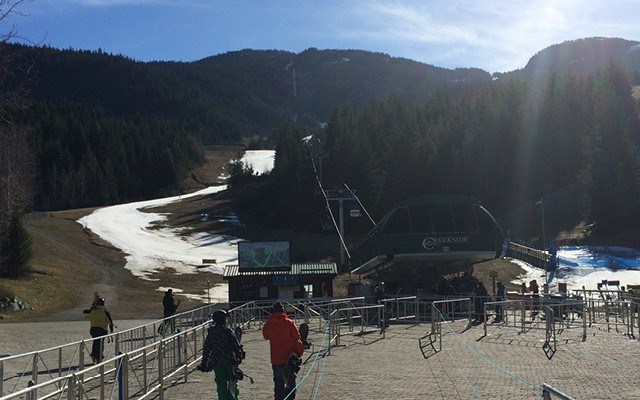If climate research proves accurate, Whistler will face drastic changes in the coming decades.
The Resort Municipality of Whistler's (RMOW) new Community Energy and Climate Action Plan (CECAP) outlines three key changes to the local climate over the next 25 to 55 years: An increase in the frequency and intensity of heavy rain events; longer, hotter and drier summers; and milder winters, with more precipitation falling as rain near the valley floor.
"Climate change is affecting us. There's really little doubt about that, and we need to be proactive to both reduce our GHGs (greenhouse gases) and mitigate and adapt to climate change to the extent that we can," said Mayor Nancy Wilhelm-Morden.
"We need to deal with what we know is going to happen."
Whistlerites got their first look at the draft CECAP at an open house on June 1.
The RMOW is collecting public input at www.whistler.ca/services/environmental-stewardship/climate-action-and-energy.
The plan — which replaces an older document from 2004 — will come before council for adoption later this summer.
"(The CECAP) was long overdue to be updated, so leaders from across the community worked on this plan by way of a community advisory group, and of course there was a lot of science that went into it, and modelling and significant staff time," the mayor said.
"It's quite a comprehensive report."
The plan outlines actions to move Whistler towards three specific climate targets: A 33-per-cent reduction in GHG emissions by 2020, an 80-per-cent reduction by 2050 and a 90-per-cent reduction by 2060 (all relative to 2007 levels); a 10-per-cent reduction in total energy consumption by 2020; and to derive 100 per cent of total energy used in Whistler from renewable sources by 2060.
"So far, we've been able to reduce our GHGs and do what we can with kind of one-off strategies, but those strategies aren't available anymore," Wilhelm-Morden said.
"We did them, we got the benefit from them — like burning off the methane down at the old landfill. That reduced our GHG emissions considerably, but once you do that once, that's it.
"Now, we really do have to focus on transportation."
Arthur De Jong, mountain planner and environmental resource manager for Whistler Blackcomb (WB), took part in some of the planning sessions for the CECAP.
"There's certainly a personal message (for me), and that is I need to drive less and ensure that all viable energy conservation applications in my home are done," De Jong said.
"The transportation aspect of our carbon emissions in the valley is by far the greatest challenge."
WB's operations emit about 8,000 tonnes of carbon annually, compared to about 111,000 per year in the valley, De Jong said, but if you factor in all of the airport traffic and people commuting up to Whistler, the local footprint is over 1 million tonnes.
"That is the elephant in the room, and what parts can we help out on? Certainly as a community, and WB being part of that, we need to generate solutions for the transportation issues that we have between Vancouver and Whistler," De Jong said.
Reducing the amount of traffic on the highway would serve two purposes — cutting GHGs and unclogging congestion during the resort's busier days.
The recently reformed Transportation Advisory Group — made up of RMOW staff and municipal councillors, representatives from Tourism Whistler, Whistler Blackcomb, BC Transit, the provincial government and members of the public — has been looking at ways to improve congestion on Highway 99, and other issues around traffic in the resort, since its inaugural meeting Dec. 8, 2015.
The group meets again on June 9.




